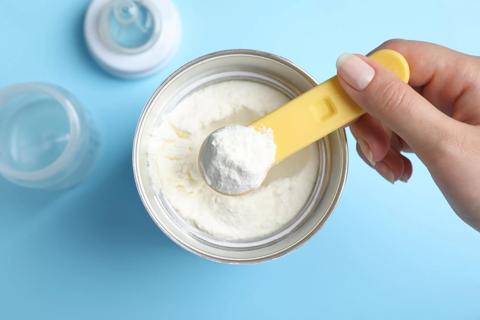Most parents report an improvement in breastfeeding, but there’s a chance the procedure won’t solve the issue

You want to breastfeed your newborn baby, but they just won’t latch. Maybe their attempts to latch are even hurting you. Could a tongue-tie be the problem?
Advertisement
Cleveland Clinic is a non-profit academic medical center. Advertising on our site helps support our mission. We do not endorse non-Cleveland Clinic products or services. Policy
“A lingual frenulum is a band of connective tissue, almost like a small string, that connects the base of the tongue to the floor of the mouth,” explains pediatrician Heidi Szugye, DO, NABBLM-C, IBCLC.
“Sometimes, the lingual frenulum causes the tongue to not move well, which can cause latching difficulties, breastfeeding issues or a painful latch that we call ankyloglossia, or a ‘tongue tie.’”
The procedure to clip and correct tongue-tie has become increasingly common in newborns. It’s been shown to help with breastfeeding — but it’s not always the answer.
Dr. Szugye explains the advantages and disadvantages of the tongue-tie procedure and what to consider first.
If your healthcare provider suspects that a tongue-tie is the cause of your baby’s latch issues or your nipple pain, they may suggest a tongue-tie surgery, which has been reported to improve both. This procedure is also sometimes called a lingual frenotomy or just a frenotomy.
It’s a quick procedure, done using medical scissors or a laser, and it removes the connective tissue.
“This essentially frees your baby’s tongue for a broader range of movement and, hopefully, an easier time latching,” Dr. Szugye says.
But there are a number of factors to consider before having it done.
Advertisement
Not all babies with a tongue-tie have breastfeeding difficulties, but breastfeeding difficulties are more frequently reported in babies with tongue-ties. And if a tongue-tie is at the root of your baby’s breastfeeding problems, a frenotomy may very well solve the problem.
“A tongue-tie can limit the movement of the baby’s tongue,” Dr. Szugye says. “If it’s attached at the very tip of the tongue, it can pull your baby’s tongue into a heart shape.”
This prevents them from being able to make movement needed for pain-free and effective feeding, like:
In this case, once the connective tissue is removed, your baby can freely move their tongue again — and start latching better.
A frenotomy is a quick procedure that takes just a few minutes, but as with any surgery, there are potential risks. Though rare, possible risks of tongue-tie surgery include:
Not every baby is a candidate for tongue-tie surgery. There are some reasons a baby should not have a frenotomy, including certain bleeding or neurologic disorders.
In general, Dr. Szugye says that more parents than not report an improvement in their child’s pain and latching abilities after tongue-tie surgery. But there’s a chance the procedure will not help improve breastfeeding — in which case, you’ll have to continue to pursue a solution.
Other causes of their feeding issues may include:
“If the tongue-tie isn’t what’s behind your baby’s pain or breastfeeding difficulties, it’s not likely to help,” Dr. Szugye clarifies, “or it may be a piece of the puzzle but not the complete fix.”
Before you pursue a frenotomy for your baby, it’s important to rule out other possible causes of latching difficulties. See a professional who’s trained in lactation and can assess a feeding.
“We always want to investigate and eliminate other causes of poor latch or nipple pain before attributing it to a baby’s tongue-tie,” Dr. Szugye says.
Advertisement
Learn more about our editorial process.
Advertisement

When breastfeeding doesn’t go as planned, you may need to supplement with formula or donor breast milk — and that’s OK

Breastfeeding supplements can be a needless expense at best, and risky at worst

Typically, milk comes in a few days after birth and regulates around four weeks after delivery

From the football hold to the cradle hold, consider trying a variety of techniques

Gentle massaging, lying on your side and hand-expressing a little milk can help

Get your milk flowing by getting comfy, releasing stress and focusing on your baby

All babies go through a perfectly normal peeling phase in the first couple weeks

Tiny kidneys and tiny tummies don’t mix well with water

Type 2 diabetes isn’t inevitable with these dietary changes

Applying a hot or cold compress can help with pain